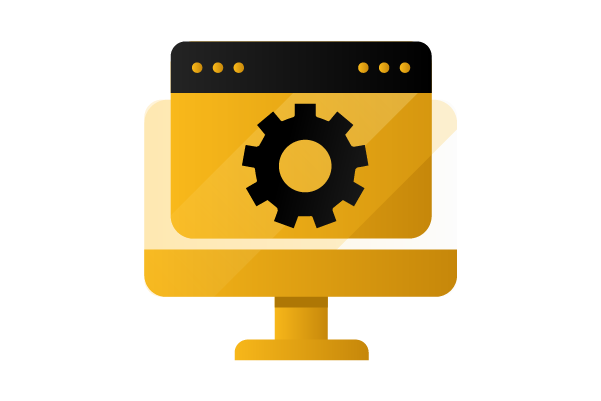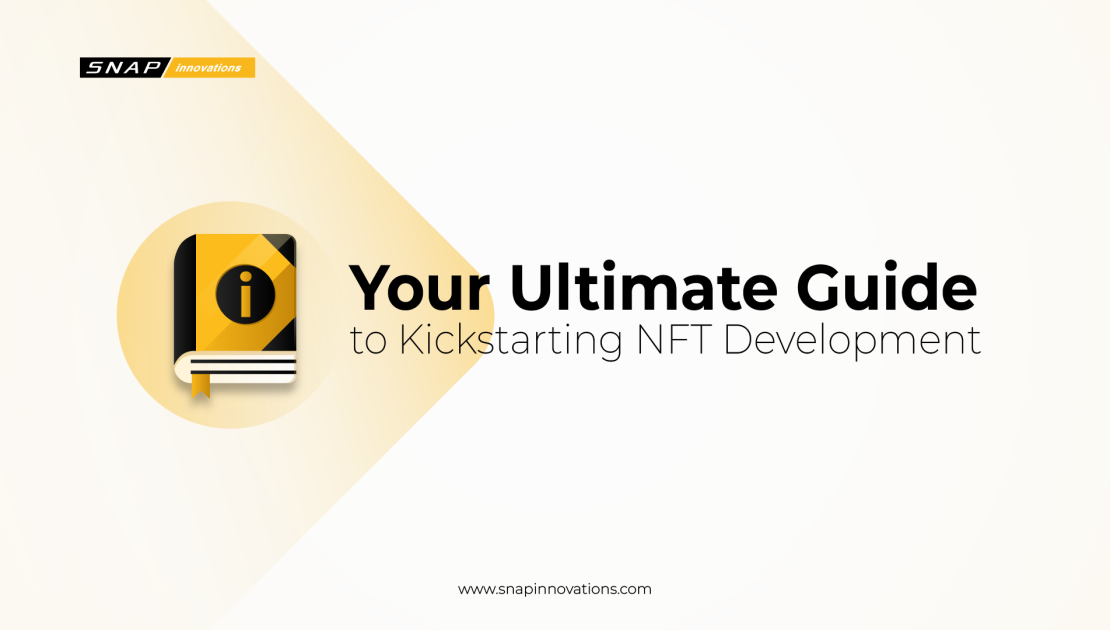In recent years, the digital realm has witnessed a renaissance of sorts, and at the heart of it is the concept of NFTs or Non-Fungible Tokens. These unique digital assets have revolutionized the way we perceive art, collectibles, and even real estate in the virtual world. But what goes into the making of these digital marvels? Welcome to our comprehensive guide on NFT development, where we’ll unravel the intricacies of creating and managing these digital assets.
Whether you’re an artist looking to digitize your creations, a developer eager to dive into this booming industry, or simply a curious soul, this guide promises to shed light on the fascinating world of NFTs. Let’s embark on this journey together!
What is NFT Development?
 NFT development is the process of creating digital assets that are unique and cannot be replicated. Unlike cryptocurrencies like Bitcoin or Ethereum, which are fungible and can be exchanged on a one-to-one basis, NFTs are distinct and hold individual value. Think of them as digital collectibles, each with its own story and worth.
NFT development is the process of creating digital assets that are unique and cannot be replicated. Unlike cryptocurrencies like Bitcoin or Ethereum, which are fungible and can be exchanged on a one-to-one basis, NFTs are distinct and hold individual value. Think of them as digital collectibles, each with its own story and worth.
The beauty of NFTs lies in their versatility. They can represent anything from digital art, music, tweets, virtual real estate, to even moments in sports. The underlying technology, blockchain, ensures that the ownership and authenticity of these tokens are secure and verifiable.
For creators and developers, NFT development offers a new avenue to monetize digital content. With the right tools and platforms, one can mint their creations into NFTs and introduce them to a global market. The decentralized nature of blockchain ensures that artists retain more control and receive a fairer share of the profits.
Why is NFT Development Gaining Popularity?
 NFT development is rapidly gaining traction in today’s digital age, a time characterized by its penchant for breaking traditional boundaries. One of the primary reasons behind this surge in popularity is the concept of digital ownership. As our world progressively shifts online, NFTs emerge as a beacon of true digital asset ownership.
NFT development is rapidly gaining traction in today’s digital age, a time characterized by its penchant for breaking traditional boundaries. One of the primary reasons behind this surge in popularity is the concept of digital ownership. As our world progressively shifts online, NFTs emerge as a beacon of true digital asset ownership.
Unlike mere possession, owning an NFT means having a claim that is verifiable and securely recorded on the blockchain. This ensures that the owner has an indisputable right over the digital asset. Furthermore, NFTs present a groundbreaking solution for artists and creators who have long battled the challenges of digital piracy. By tokenizing their creations, they can sell their work directly to their audience. This not only guarantees the authenticity of the piece but also significantly reduces the chances of unauthorized reproductions.
Also Read: Smart Trading Development: Unraveling the Future in the Digital Era
But the scope of NFTs isn’t limited to just art. They have found applications in a myriad of fields, including gaming, real estate, and even fashion. The versatility of NFTs suggests that their potential applications are boundless, positioning NFT development as a domain ripe with opportunities for exponential growth.
Lastly, a significant cultural shift is underway. The younger generation, with its digital-first approach, places immense value and appreciation on digital assets. NFTs, which stand at the crossroads of technology and art, perfectly align with this evolving mindset, further propelling their ascent in the digital realm.
Steps to Start with NFT Development
 Embarking on your NFT development journey? Here’s a roadmap:
Embarking on your NFT development journey? Here’s a roadmap:
1. Research and Choose a Platform
The first step in your NFT development journey is to research and select the right platform. The NFT universe is expansive, with a plethora of platforms catering to different creators and collectors. It’s imperative to identify a platform that resonates with your objectives and the audience you aim to reach.
Some of the notable platforms include OpenSea, known for its extensive range and diverse digital assets; Rarible, a decentralized platform celebrated for its community-centric approach; and Mintable, which is beginner-friendly and offers gas-free minting. When deciding on a platform, it’s essential to weigh factors such as fees, the reach of the audience, supported digital formats, and the platform’s standing within the NFT community.
2. Create Your Digital Asset
At the core of any NFT lies the digital asset it embodies. This stage is where you can let your creativity run wild and bring your vision to fruition. NFTs can encapsulate a myriad of digital content forms. From digital art pieces like paintings and animations to unique music tracks, albums, digital collectibles like trading cards, and even parcels in virtual worlds, the possibilities are endless.
However, it’s crucial to ensure that your digital asset aligns with the formats supported by your chosen NFT platform, with common formats being JPEG, PNG, GIF, MP3, and MP4.
3. Minting Process
Minting is the pivotal act that metamorphoses your digital creation into a marketable NFT. In essence, minting is the digital counterpart of authenticating a tangible artwork piece. It involves crafting a distinct digital certificate of authenticity for your asset on the blockchain, thereby attesting to the NFT’s originality and ownership.
However, this process isn’t without its costs. Minting an NFT typically incurs a fee, often termed “gas,” which compensates for the computational power expended during the minting procedure. Most platforms predominantly use Ethereum as the currency for these fees. Before embarking on the minting journey, it’s advisable to have a comprehensive grasp of the associated expenses and ensure you have the requisite cryptocurrency funds in your digital wallet.
Challenges in NFT Development
The world of Non-Fungible Tokens (NFTs) has taken the digital realm by storm, offering a unique way to represent ownership of digital assets. However, like any emerging technology, NFT development comes with its set of challenges. Here’s a deeper dive into some of the primary concerns:
1. Environmental Concerns:
One of the most discussed challenges in the NFT space is the environmental impact. Blockchain networks, particularly Ethereum, which is a popular platform for NFTs, are known for their high energy consumption.
This has led to significant concerns about the carbon footprint and environmental degradation associated with NFT transactions. As a result, developers and stakeholders in the NFT community are actively exploring more sustainable and eco-friendly alternatives to mitigate these environmental effects.
2. Market Volatility:
The NFT market is characterized by its unpredictability. The value of an NFT can fluctuate dramatically, with some tokens fetching millions of dollars at auctions, while others may languish without finding a buyer.
This volatility stems from various factors, including the uniqueness of the asset, its perceived value, and market demand. For anyone looking to invest in or develop NFTs, it’s imperative to have a clear understanding of the market dynamics and be prepared for potential financial ups and downs.
3. Technical Barriers:
The development and deployment of NFTs require a comprehensive understanding of blockchain technology. This can pose a challenge for those who are new to the field. Blockchain, with its decentralized nature and cryptographic security measures, is complex.
Developing an NFT involves not just creating a digital asset but also ensuring its authenticity, security, and uniqueness on the blockchain. For newcomers, this means there’s a steep learning curve, necessitating time and effort to master the technical intricacies.
Read Next: Blockchain Development: Emerging Trends in Blockchain Technology
4. Legal and Regulatory Issues:
The legal framework surrounding NFTs is still in its infancy. As the popularity of NFTs grows, so does the attention from regulatory bodies. There are numerous questions about copyright, ownership rights, taxation, and more.
Developers and NFT owners must be vigilant about staying updated with the latest legal developments. Ensuring compliance with evolving regulations is crucial to avoid potential legal pitfalls and ensure the long-term viability of NFT projects.
Conclusion
NFT development is undeniably reshaping the digital landscape. As we stand at the cusp of this digital renaissance, the opportunities are as vast as the challenges. For creators, developers, and enthusiasts, the NFT world offers a playground of possibilities. It’s a realm where art meets technology, and innovation knows no bounds.
As you venture into NFT development, remember that like any frontier, it’s filled with both promise and pitfalls. Equip yourself with knowledge, stay curious, and most importantly, enjoy the journey into the mesmerizing world of Non-Fungible Tokens. Welcome to the future of digital artistry!

